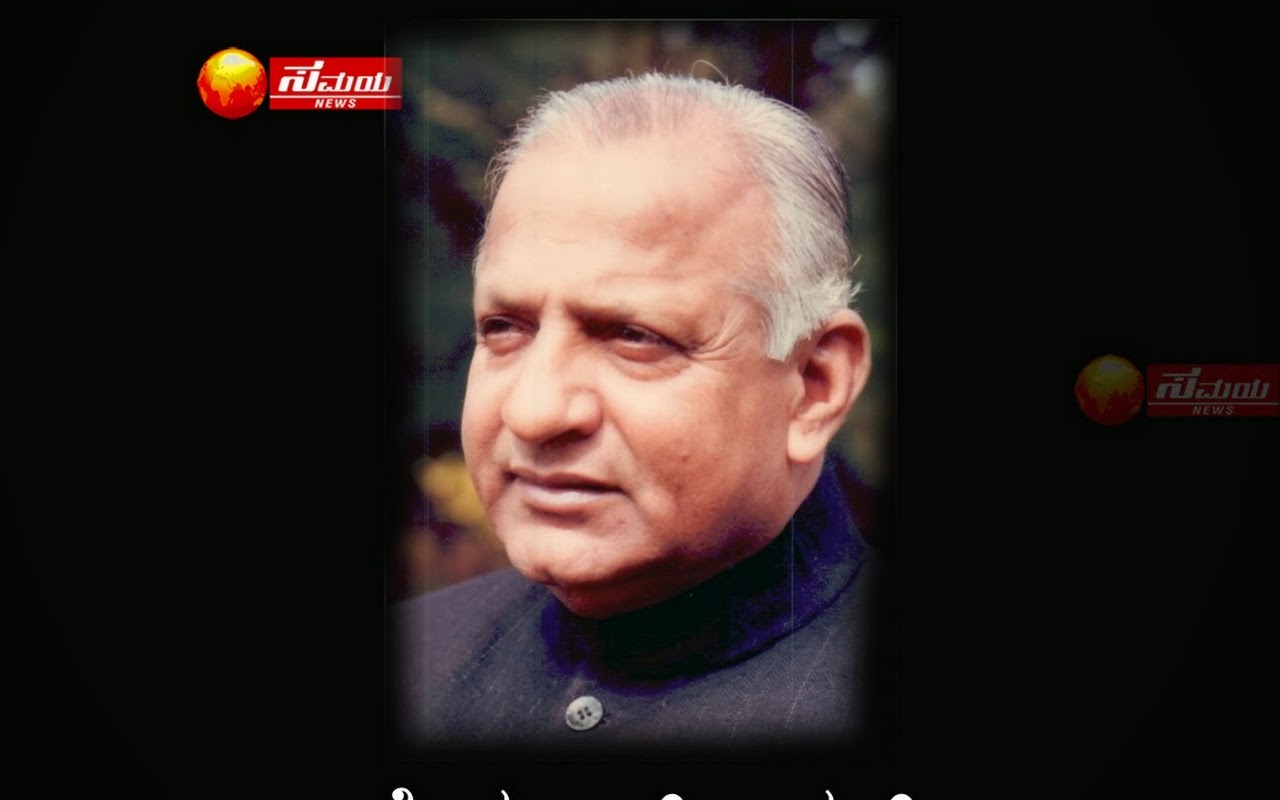ಚೆಂದ ಚೆಂದದ’ ಹೆಸರು ಇಟ್ಕೊಂಡು ಅಪ್ಪಳಿಸುತ್ತವಲ್ಲ ಈ ಚಂಡಮಾರುತಗಳು! ಇವಕ್ಕೆ ಹೆಸರು ಇಡೋರು ಯಾರು?
ಇತ್ತೀಚೆಗಷ್ಟೇ ನೀವಾರ್ ಚಂಡಮಾರುತ ಎದ್ದಿತ್ತು. ಇದಕ್ಕೆ ಹೆಸರುಕೊಟ್ಟಿದ್ದು ಇರಾನ್. ಇದೀಗ ಪ್ರಾರಂಭವಾಗಿರುವ ಬುರೇವಿ ಮಾಲ್ಡೀವ್ಸ್ನ ಸಲಹೆ. ಇನ್ನೂ ಮುಂದೆ ಅಪ್ಪಳಿಸಲಿರುವ ಸೈಕ್ಲೋನ್ಗಳಿಗೂ ಈಗಾಗಲೇ ಹೆಸರಿಡಲಾಗಿದೆ.
ಆದರೆ ಈ ರುದ್ರ ಚಂಡಮಾರುತಗಳು ಹುಟ್ಟುಹುಟ್ಟುತ್ತಲೇ ಹೆಸರಿಟ್ಟುಕೊಂಡು ದಾಂಗುಡಿ ಇಡುತ್ತವಲ್ಲ..! ಅಷ್ಟಕ್ಕೂ ಇವಕ್ಕೆ ನಾಮಕರಣ ಮಾಡುವವರು ಯಾರು? ಯಾಕೆ ಮಾಡುತ್ತಾರೆ. ಇಷ್ಟೆಲ್ಲ ಪ್ರಕ್ರಿಯೆಗಳು ಹೇಗೆ ನಡೆಯುತ್ತವೆ ಎಂಬುದು ಇಂದಿಗೂ ಅನೇಕರ ಕುತೂಹಲ.

2000 ದಲ್ಲಿ ಶುರುವಾಯಿತು.. ಭ್ರಷ್ಟ ರಾಜಕಾರಣಿಗಳು, ಮಹಿಳೆಯರ ಹೆಸರಿನ ಸೈಕ್ಲೋನ್ಗಳು
ಮೊದಲೆಲ್ಲ ಸೈಕ್ಲೋನ್ಗಳಿಗೆ ಹೆಸರಿಡಲು ನಿರ್ದಿಷ್ಟ ಪದ್ಧತಿ ಇರಲಿಲ್ಲ. 1953ರ ಹೊತ್ತಲ್ಲಿ ಆಸ್ಟ್ರೇಲಿಯಾದಲ್ಲಿ ಭ್ರಷ್ಟ ರಾಜಕಾರಣಿಗಳ ಹೆಸರನ್ನು ಇಡಲಾಗುತ್ತಿತ್ತು. ಹಾಗೇ ಅಮೆರಿಕ ಮಹಿಳೆಯರ ಹೆಸರನ್ನೇ ಸೈಕ್ಲೋನ್ಗಳಿಗೂ ಇಡಲು ಶುರು ಮಾಡಿಕೊಂಡಿತ್ತು. ಎ ದಿಂದ ಡಬ್ಲ್ಯೂವರೆಗಿನ ಅಕ್ಷರಗಳನ್ನೂ ಪ್ರಯೋಗ ಮಾಡುತ್ತಿತ್ತು. ಆದರೆ ಮೊಟ್ಟ ಮೊದಲಿಗೆ ನಿರ್ದಿಷ್ಟ ಪದ್ಧತಿಯ ಅನುಸಾರ, ಚಂಡಮಾರುತಗಳು ಹುಟ್ಟುವ ಮೊದಲೇ ಅವನ್ನು ಹೆಸರಿಟ್ಟು ಗುರುತಿಸುವ ಪರಿಪಾಠ ಶುರುವಾಗಿದ್ದು 2000ದಲ್ಲಿ.
ಭಾರತ, ಬಾಂಗ್ಲಾದೇಶ, ಮಾಲ್ಡೀವ್ಸ್, ಮ್ಯಾನ್ಮಾರ್, ಒಮಾನ್, ಪಾಕಿಸ್ತಾನ, ಶ್ರೀಲಂಕಾ ಮತ್ತು ಥೈಲ್ಯಾಂಡ್ ದೇಶಗಳನ್ನೊಳಗೊಂಡ WMO/ESCAP (ವಿಶ್ವ ಹವಾಮಾನ ಸಂಸ್ಥೆ ಹಾಗೂ ಏಷ್ಯಾ ಮತ್ತು ಪೆಸಿಫಿಕ್ಗಳಿಗಾಗಿ ಇರುವ ವಿಶ್ವಸಂಸ್ಥೆಯ ಆರ್ಥಿಕ ಮತ್ತು ಸಾಮಾಜಿಕ ಆಯೋಗ) ಮೊಟ್ಟಮೊದಲಿಗೆ ಇದನ್ನು ಪ್ರಾರಂಭ ಮಾಡಿತು.
ಪ್ರತಿ ಸೈಕ್ಲೋನ್ಗಳು ಅಪ್ಪಳಿಸುವ ಹೊತ್ತಿಗೆ ಈ ಎಂಟೂ ದೇಶಗಳು ಒಂದೊಂದು ಹೆಸರು ಸೂಚಿಸುತ್ತಿದ್ದವು. ಅದರಲ್ಲಿ ಆ ನಿರ್ದಿಷ್ಟ ಚಂಡಮಾರುತಕ್ಕೆ ಯಾವ ಹೆಸರು ಎಂಬುದನ್ನು WMO/ESCAPದ ಚಂಡಮಾರುತಗಳ ಪ್ಯಾನಲ್ ಅಂತಿಮಗೊಳಿಸತೊಡಗಿತು. ಈ ಹೆಸರುಗಳು ಚಂಡಮಾರುತದ ಹುಟ್ಟುವ ಸ್ಥಳ, ವೇಗವನ್ನೂ ಆದರಿಸಿ ಇರುತ್ತಿತ್ತು.
2004ರಲ್ಲಿ ಅಪ್ಪಳಿಸಿದ್ದ ಚಂಡಮಾರುತಕ್ಕೆ ಭಾರತ ಮೊದಲ ಬಾರಿಗೆ ಅಗ್ನಿ ಎಂದು ಹೆಸರಿಟ್ಟಿತ್ತು. ಅದಾದ ಮೇಲೆ 2019ರಲ್ಲಿ ವಾಯು ಎಂಬುದು ನಮ್ಮ ದೇಶ ಇಟ್ಟ ಹೆಸರು. ಈಗಲೂ ಸಹ ಬಂಗಾಳ ಕೊಲ್ಲಿ, ಅರೇಬಿಯನ್ ಸಾಗರ, ಹಿಂದೂ ಮಹಾಸಾಗರದಲ್ಲಿ ಹುಟ್ಟುವ ಚಂಡಮಾರುತಗಳಿಗೆ ಈ ಎಂಟು ರಾಷ್ಟ್ರಗಳ ಪ್ರಾದೇಶಿಕ ಹವಾಮಾನ ಇಲಾಖೆಗಳ ಹವಾಮಾನ ತಜ್ಞರೇ ಹೆಸರನ್ನು ಸೂಚಿಸುತ್ತಾರೆ. ಹಾಗೇ 2018ರಲ್ಲಿ ಈ ಸಮಿತಿಗೆ ಇರಾನ್, ಕತಾರ್, ಸೌದಿ ಅರೇಬಿಯಾ, ಯುಎಇ ಮತ್ತು ಯೆಮೆನ್ ಸೇರ್ಪಡೆಯಾಗಿವೆ. ಪ್ರತಿ ರಾಷ್ಟ್ರಕ್ಕೂ ಎಂಟು ಹೆಸರನ್ನು ಸಲಹೆ ಮಾಡುವ ಅಧಿಕಾರ ಇರುತ್ತದೆ.
ಜಾಗತಿಕವಾಗಿಯೂ ಇದೇ ಮಾದರಿ
ಈಗಂತೂ ಜಾಗತಿಕವಾಗಿ ಈ ಪದ್ಧತಿ ಮುಂದುವರಿಯುತ್ತಿದೆ. ವಿಶ್ವದ ಯಾವುದೇ ಸಾಗರದಲ್ಲಿ ಹುಟ್ಟುವ ಚಂಡಮಾರುತಗಳಿಗೆ ಆಯಾ ಪ್ರಾದೇಶಿಕ ವಿಶೇಷ ಹವಾಮಾನ ಕೇಂದ್ರಗಳು (RSMCs) ಮತ್ತು ಉಷ್ಣವಲಯ ಚಂಡಮಾರುತ ಎಚ್ಚರಿಕೆ ಕೇಂದ್ರಗಳು (TCWCs) ನಾಮಕರಣ ಮಾಡುತ್ತವೆ. ಜಗತ್ತಿನಲ್ಲಿ ಭಾರತೀಯ ಹವಾಮಾನ ಇಲಾಖೆ (IMD) ಸೇರಿ ಒಟ್ಟು ಆರು ಪ್ರಾದೇಶಿಕ ವಿಶೇಷ ಹವಾಮಾನ ಕೇಂದ್ರಗಳು ಮತ್ತು ಐದು ಉಷ್ಣವಲಯ ಚಂಡಮಾರುತ ಎಚ್ಚರಿಕೆ ಕೇಂದ್ರಗಳಿವೆ.
ಆಯಾ ದೇಶಗಳ ಭಾಷೆಯಲ್ಲಿ ಕೆಲವು ವಿಭಿನ್ನ ಅರ್ಥಕೊಡುವ ಹೆಸರನ್ನೇ ಚಂಡಮಾರುತಕ್ಕೆ ಇಡುತ್ತಿರುವುದು ಸೂಕ್ಷ್ಮವಾಗಿ ಗಮನಿಸಿದರೆ ಅರ್ಥವಾಗುತ್ತದೆ. ಉದಾಹರಣೆಗೆ 2017ರ ನವೆಂಬರ್ನಲ್ಲಿ ಅಪ್ಪಳಿಸಿದ ಚಂಡಮಾರುತಕ್ಕೆ ಬಾಂಗ್ಲಾದೇಶ ಓಖಿ ಎಂದು ಹೆಸರಿಟ್ಟಿತ್ತು. ಅದರ್ಥ ಬೆಂಗಾಳಿ ಭಾಷೆಯಲ್ಲಿ ಕಣ್ಣು. ಹಾಗೇ ಫನಿ ಎಂದರೆ ಹಾವಿನ ಹೆಡೆ. ಇಲ್ಲಿಯವರೆಗೆ ಹಿಂದೂ ಮಹಾಸಾಗರ, ಅರೇಬಿಯನ್ ಮತ್ತು ಬಂಗಾಳಕೊಲ್ಲಿಯಲ್ಲಿ ಹುಟ್ಟಿದ ಸುಮಾರು 64ಕ್ಕೂ ಹೆಚ್ಚು ಚಂಡಮಾರುತಗಳಿಗೆ ವಿಭಿನ್ನ, ಚೆಂದನೆಯ ಹೆಸರಿಡಲಾಗಿದೆ.

ಹೆಸರು ಕೊಡೋದು ಯಾಕೆ?
ಅಷ್ಟಕ್ಕೂ ಚಂಡಮಾರುಗಳಿಗೆ ಹೆಸರನ್ಯಾಕೆ ಕೊಡಲು ನಿರ್ಧರಿಸಿದ್ದಾರೆ ಎಂಬುದಕ್ಕೆ ಒಂದಷ್ಟು ಕಾರಣಗಳು ಸಿಗುತ್ತವೆ. ಮೊದಲನೆದಾಗಿ, ಆಯಾ ಪ್ರದೇಶದಲ್ಲಿ, ಬೇರೆಬೇರೆ ಕಾಲದಲ್ಲಿ ಅಪ್ಪಳಿಸುವ ಚಂಡಮಾರುತಗಳನ್ನು ಗುರುತಿಸಲು ಸುಲಭವಾಗುತ್ತದೆ. ಆ ನಿರ್ಧಿಷ್ಟ ಚಂಡಮಾರುತದ ಹಾನಿ ಪ್ರಮಾಣವನ್ನು ಜನರಿಗೆ ತಿಳಿಸಿ, ಅರಿವು ಮೂಡಿಸಲು ಸಹಾಯವಾಗುತ್ತದೆ.
ಕೆಲವೊಮ್ಮೆ ಒಂದೇ ಪ್ರದೇಶದಲ್ಲಿ ಒಂದಕ್ಕಿಂತ ಜಾಸ್ತಿ ಚಂಡಮಾರುತಗಳು ಒಟ್ಟಿಗೇ ಏಳುತ್ತವೆ.. ಅಥವಾ ಒಂದರ ಬೆನ್ನಿಗೆ ಮತ್ತೊಂದು ಅಪ್ಪಳಿಸುತ್ತವೆ. ಈ ಸಮಯದಲ್ಲಿ ಹೆಸರು ಇಡುವುದರಿಂದ ತುಂಬ ಅನುಕೂಲ. ಅಲ್ಲದೆ, ಸ್ಪಷ್ಟವಾಗಿ ಹಾನಿ, ಸಾವು, ನೋವಿನ ಲೆಕ್ಕಾಚಾರಗಳನ್ನು ದಾಖಲಿಸಬಹುದು. ಅದರಲ್ಲೂ ಅನೇಕ ವರ್ಷಗಳವರೆಗೆ ಚಂಡಮಾರುತ ಹೆಸರಿನಿಂದಲೇ ನೆನಪಿನಲ್ಲಿ ಉಳಿಯುತ್ತದೆ.
ಸದ್ಯದಲ್ಲೇ ಬೀಸಲಿದೆ ಪಾಕಿಸ್ತಾನದ ‘ಗುಲಾಬ್’ ಚಂಡಮಾರುತ
ಇತ್ತೀಚೆಗಷ್ಟೇ ನಿವಾರ್ ಚಂಡಮಾರುತ ಎದ್ದಿತ್ತು. ಇದಕ್ಕೆ ಹೆಸರು ಕೊಟ್ಟಿದ್ದು ಇರಾನ್. ಇದೀಗ ಪ್ರಾರಂಭವಾಗಿರುವ ಬುರೇವಿ ಮಾಲ್ಡೀವ್ಸ್ನ ಸಲಹೆ. ಇನ್ನೂ ಮುಂದಕ್ಕೆ ಅಪ್ಪಳಿಸಲಿರುವ ಸೈಕ್ಲೋನ್ಗಳಿಗೂ ಈಗಾಗಲೇ ಹೆಸರಿಡಲಾಗಿದೆ. ತೌಕ್ಟೆ (ಮ್ಯಾನ್ಮಾರ್), ಯಾಸ್ (ಒಮಾನ್), ಗುಲಾಬ್ (ಪಾಕಿಸ್ತಾನ) ಎಂಬ ಸೈಕ್ಲೋನ್ಗಳು ಶೀಘ್ರದಲ್ಲೇ ದಾಂಗುಡಿ ಇಡಲಿವೆ ಎಂದು ಹವಾಮಾನ ಇಲಾಖೆಗಳು ಪಟ್ಟಿ ಮಾಡಿವೆ.



